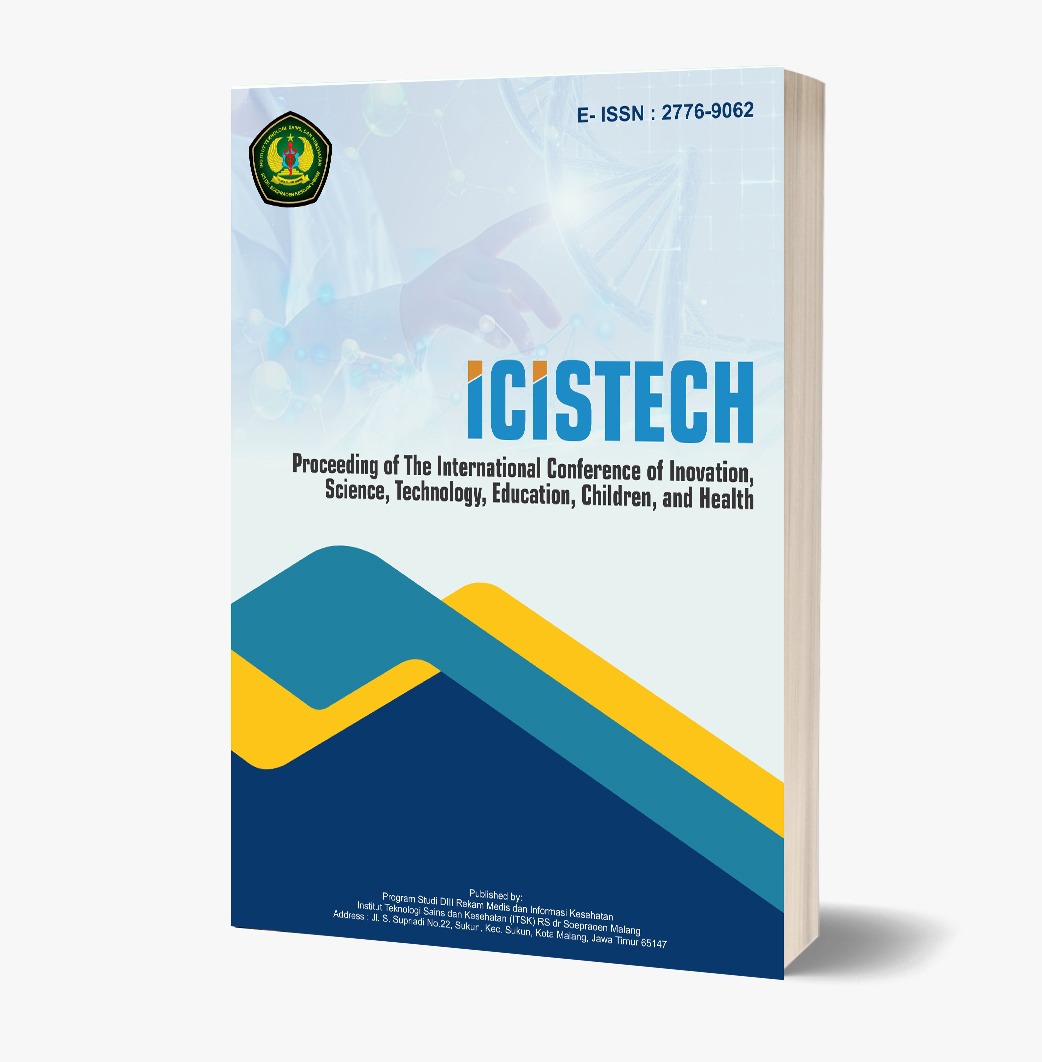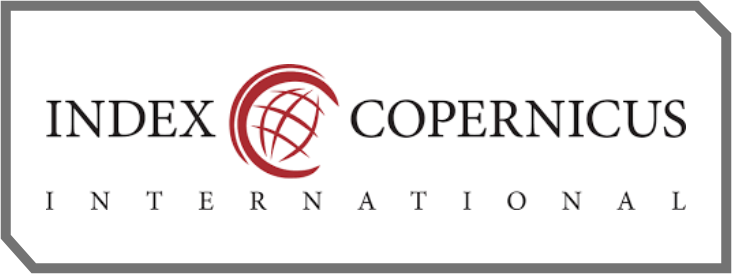The Relationship between Pregnancy Complications and the Incidence of Anemia in Expectant Mothers
DOI:
https://doi.org/10.62951/icistech.v5i1.220Keywords:
Anemia, Parity, Pregnancy spacingAbstract
Anemia is a global health problem that often occurs in pregnant women. Inadequate pregnancy spacing can contribute to the risk of anemia. This study aims to analyze the relationship between pregnancy spacing and the incidence of anemia in pregnant women. This type of research is observational analytic with a case-control design. This study was conducted from February to October 2024 at a selected health center in the region. The case-control design was chosen to investigate the causes of anemia during pregnancy, particularly focusing on the effects of pregnancy spacing. The number of samples used was 30 cases, while 30 control cases were selected by simple random sampling from a larger pool of eligible pregnant women. The analysis employed the chi-square test to determine the statistical significance of the relationship between pregnancy spacing and the incidence of anemia. Results showed that 21.7% of respondents had anemia, with a significantly higher prevalence in those with a pregnancy spacing of less than two years. After conducting the chi-square test, the result yielded a significant p-value of 0.002, indicating a strong association between short pregnancy intervals and anemia. This finding highlights the potential risks associated with inadequate pregnancy spacing, emphasizing the importance of family planning and prenatal care in preventing anemia in expectant mothers. The study suggests that adequate pregnancy spacing may reduce the incidence of anemia, thus promoting healthier pregnancy outcomes. Furthermore, it underscores the need for educational programs aimed at raising awareness of the benefits of proper pregnancy planning. Such initiatives would not only help prevent anemia but also improve maternal and fetal health. Comprehensive health policies promoting spacing between pregnancies can have long-term positive effects on maternal well-being.
References
Amalina, L. N. (2023). Incidence of anemia in pregnant women with closer spacing of pregnancies and multiparity: A case report. Bioscientia Medicina: Journal of Biomedicine and Translational Research, 7(9), 3561-3565. https://doi.org/10.37275/bsm.v7i9.858
Arfan, I., Marlenywati, M., Saleh, I., Rizky, A., & Marlina, M. (2024). The risk factors for anemia in women at third trimester of pregnancy in the primary health center of Tanjung Sekayam: A case-control study. https://doi.org/10.20473/amnt.v8i1SP.2024.37-44
Bhatti, T. N., Naeem, M., Akhtar, N. U., & Hanif, A. (2023). Impact of short birth spacing on maternal anemia at district head quarters hospital Nankana Sahib: Impact of short birth spacing. Pakistan BioMedical Journal, 08-12. https://doi.org/10.54393/pbmj.v6i11.960
Gurmu, L., Wakgari, N., Kolola, T., & Danusa, K. T. (2022). Effect of short inter-pregnancy interval on perinatal outcomes among pregnant women in North-west Ethiopia: A prospective cohort study. Frontiers in Public Health, 10, 953481. https://doi.org/10.3389/fpubh.2022.953481
Hutcheon, J. A., Nelson, H. D., Stidd, R., Moskosky, S., & Ahrens, K. A. (2019). Short interpregnancy intervals and adverse maternal outcomes in high‐resource settings: An updated systematic review. Paediatric and Perinatal Epidemiology, 33(1), O48-O59. https://doi.org/10.1111/ppe.12518
Kemenkes RI. (2021). Laporan Kesehatan Ibu dan Anak 2021. Kementerian Kesehatan Republik Indonesia.
Kemppinen, L., Mattila, M., Ekholm, E., Huolila, L., Pelto, J., Karlsson, H., ... & Karlsson, L. (2022). Gestational anemia and maternal antenatal and postpartum psychological distress in a prospective FinnBrain Birth Cohort Study. BMC Pregnancy and Childbirth, 22(1), 704. https://doi.org/10.1186/s12884-022-05032-z
Kusumastuti, T., Putri, D. P., Eliza, C. P., & Hanifah, A. N. (2023). KEK pada ibu hamil: Faktor risiko dan dampak. Jurnal Kesehatan Tambusai, 4(3), 2719-2726.
Mahande, M. J., & Obure, J. (2016). Effect of interpregnancy interval on adverse pregnancy outcomes in northern Tanzania: A registry-based retrospective cohort study. BMC Pregnancy and Childbirth, 16, 1-9. https://doi.org/10.1186/s12884-016-0929-5
Maulina, R., Alfitri, R., & Amalia, W. (2023). Impact of micronutrient supplementation on hemoglobin, ferritin, and retinol status in stunting children under 5 years in urban poor regions.
Nazir, I. I., Alharthi, B. A., & Althomali, H. A. (2019). Short inter-pregnancy interval as a risk factor for anaemia in pregnancy. EC Microbiology, 15, 148-157.
Noor, T., Maheen, E., & Latif, F. (2018). Association of short interpregnancy interval (IPI) with maternal anemia at a tertiary care hospital. J Med Physiol Biophys, 40, 36-39.
Onwuka, C. C., Ugwu, E. O., Obi, S. N., Onwuka, C. I., Dim, C. C., Eleje, G. U., ... & Ozumba, B. C. (2020). Effects of short interpregnancy interval on maternal and perinatal outcomes: A cohort study of pregnant women in a low income country. Nigerian Journal of Clinical Practice, 23(7), 928-933. https://doi.org/10.4103/njcp.njcp_423_19
Riyanto, D. L., Herdian, F. S., Sugiarta, G. Y., Panjaitan, H. P., Naomi, K. A., Hanifi, M., ... & Purwosunu, Y. (2017). Short interpregnancy interval as a risk factor for anemia in pregnancy: A retrospective cohort study in Duren Sawit, Jakarta, 2014-2016. Advanced Science Letters, 23(7), 6828-6830. https://doi.org/10.1166/asl.2017.9408
Victora, C. G., Christian, P., Vidaletti, L. P., Gatica-Domínguez, G., Menon, P., & Black, R. E. (2021). Revisiting maternal and child undernutrition in low-income and middle-income countries: Variable progress towards an unfinished agenda. The Lancet, 397(10282), 1388-1399. https://doi.org/10.1016/S0140-6736(21)00394-9
Weiss, A., Sela, H. Y., Rotem, R., Grisaru-Granovsky, S., & Rottenstreich, M. (2021). Recurrent short interpregnancy interval: Maternal and neonatal outcomes. European Journal of Obstetrics & Gynecology and Reproductive Biology, 264, 299-305. https://doi.org/10.1016/j.ejogrb.2021.07.040
World Health Organization (WHO). (2021). Global Nutrition Targets 2025: Anaemia Policy Brief.
Yaya, S., Uthman, O. A., Ekholuenetale, M., Bishwajit, G., & Adjiwanou, V. (2020). Effects of birth spacing on adverse childhood health outcomes: Evidence from 34 countries in sub-Saharan Africa. The Journal of Maternal-Fetal & Neonatal Medicine, 33(20), 3501-3508. https://doi.org/10.1080/14767058.2019.1576623
Zuliyanti, N. I. (2022). Hubungan jarak kehamilan dengan kejadian anemia pada ibu hamil trimester III di Puskesmas Bagelen Kabupaten Purworejo. Jurnal Komunikasi Kesehatan, 13(1), 1-8. https://doi.org/10.56772/jkk.v13i1.217
Downloads
Published
How to Cite
Issue
Section
License
Copyright (c) 2025 Proceeding of The International Conference of Inovation, Science, Technology, Education, Children, and Health

This work is licensed under a Creative Commons Attribution-ShareAlike 4.0 International License.













